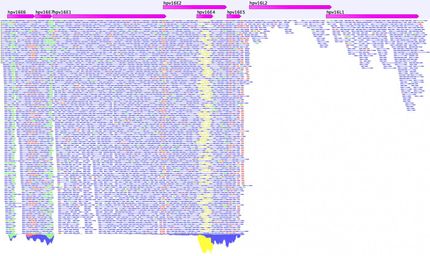A GPS in your DNA
Tel Aviv University research says that genetics can reveal your geographic ancestral origin
Advertisement
While your DNA is unique, it also tells the tale of your family line. It carries the genetic history of your ancestors down through the generations. Now, says a Tel Aviv University researcher, it's also possible to use it as a map to your family's past.
Prof. Eran Halperin of TAU's Blavatnik School of Computer Science and Department of Molecular Microbiology and Biotechnology, along with a group of researchers from University of California, Los Angeles, are giving new meaning to the term "genetic mapping." Using a probabilistic model of genetic traits for every coordinate on the globe, the researchers have developed a method for determining more precisely the geographical location of a person's ancestral origins.
The new method is able to pinpoint more specific locations for an individual's ancestors, for example placing an individual's father in Paris and mother in Barcelona. Previous methods would "split the difference" and place this origin inaccurately at a site between those two cities, such as Lyon.
Published in the journal Nature Genetics, this method has the potential to reveal the ancestry, origins, and migration patterns of many different human and animal populations. It could also be a new model for learning about the genome.
Points of origin
There are points in the human genome called SNPs that are manifested differently in each individual, explains Prof. Halperin. These points mutated sometime in the past and the mutation was then passed to a large part of the population in a particular geographic region. The probability of a person possessing these mutations today varies depending on the geographical location of those early ancestors.
"We wanted to ask, for example, about the probability of having the genetic mutation 'A' in a particular position on the genome based on geographical coordinates," he says. When you look at many of these positions together in a bigger picture, it's possible to group populations with the same mutation by point of origin.
To test their method, Prof. Halperin and his fellow researchers studied DNA samples from 1,157 people from across Europe. Using a probabilistic mathematical algorithm based on mutations in the genome, they were able to accurately determine their ancestral point or points of origin using only DNA data and the new mathematical model, unravelling genetic information to ascertain two separate points on the map for the mother and father. The researchers hope to extend this model to identify the origins of grandparents, great-grandparents, and so on.
The new method could provide information that has applications in population genetic studies — to study a disease that impacts a particular group, for example. Researchers can track changes in different genomic traits across a map, such as the tendency for southern Europeans to have a mutation in a gene that causes lactose intolerance, a mutation missing from that gene in northern Europeans.
A closer look at migration
The researchers believe that their model could have also relevance for the animal kingdom, tracking the movement of animal populations. "In principle, you could figure out where the animals have migrated from, and as a result learn about habitat changes due to historical climate change or other factors," says Prof. Halperin.




















































